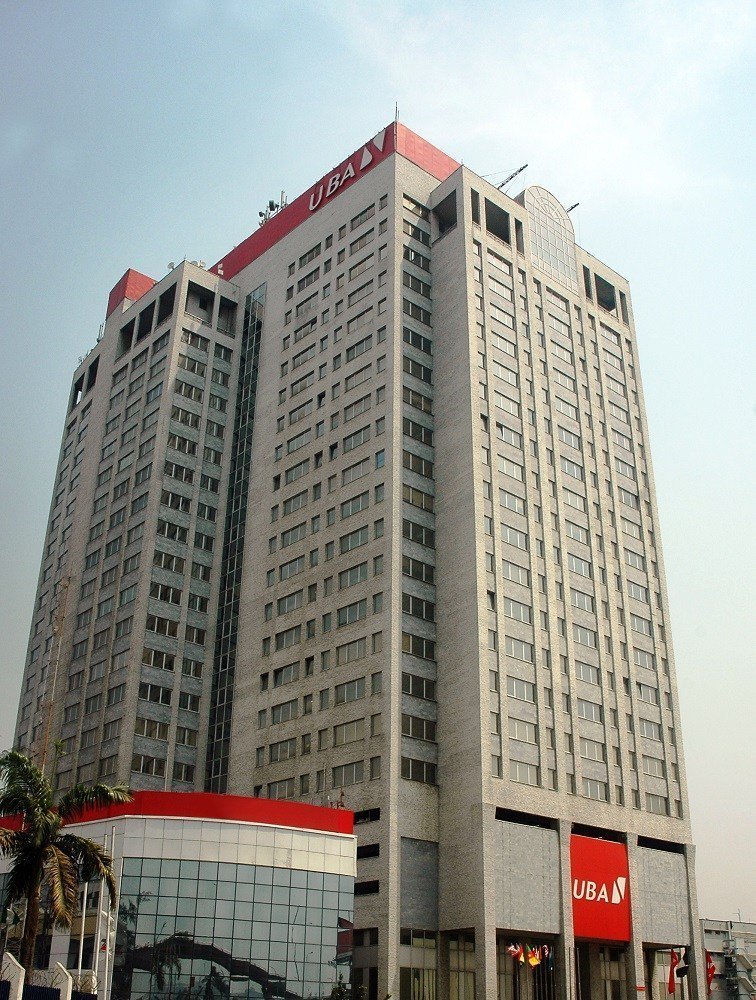History of Banking II
Today, there are two Central Banks in Francophone Africa:
The BEAC and BCEAO. Created in 1972, the Bank of Central African States (BEAC)
is the central bank common to the six states that constitute the Economic and
Monetary Community of Central Africa (CEMAC). They are respectively Cameroon,
Central African Republic, Congo, Gabon, Equatorial Guinea and Chad. This bank
is headquartered in Cameroon and carries similar functions with the Central
Bank of West African States (BCEAO) with headquarters in Dakar, Senegal.
The BEAC and BCEAO. Created in 1972, the Bank of Central African States (BEAC)
is the central bank common to the six states that constitute the Economic and
Monetary Community of Central Africa (CEMAC). They are respectively Cameroon,
Central African Republic, Congo, Gabon, Equatorial Guinea and Chad. This bank
is headquartered in Cameroon and carries similar functions with the Central
Bank of West African States (BCEAO) with headquarters in Dakar, Senegal.
The Central Bank of West African States (BCEAO) is the
common issuing institution of the member States of the West African Monetary
Union (WAMU). At the time of its founding on May 12, 1962, its membership
comprised of the Republics of Côte d’Ivoire, Dahomey, Mali, Niger, Mauritania,
Senegal, Togo and Upper Volta. Currently, there are eight member States in the
Monetary Union (UEMOA): Benin, Burkina Faso, Côte d’Ivoire, Guinea-Bissau,
Mali, Niger, Senegal and Togo.
common issuing institution of the member States of the West African Monetary
Union (WAMU). At the time of its founding on May 12, 1962, its membership
comprised of the Republics of Côte d’Ivoire, Dahomey, Mali, Niger, Mauritania,
Senegal, Togo and Upper Volta. Currently, there are eight member States in the
Monetary Union (UEMOA): Benin, Burkina Faso, Côte d’Ivoire, Guinea-Bissau,
Mali, Niger, Senegal and Togo.
Banks in Kenya are supervised by Banki Kuu ya Kenya or the
Central Bank of Kenya (CBK). Based in Nairobi, CBK was formed in 1966,
following the dissolution of the East African Currency Board. Standard
Chartered Bank Kenya Limited, a subsidiary of the Standard Chartered, the
British multinational financial group, was established in 1911, and therefore
the oldest of the banks in Kenya.
Central Bank of Kenya (CBK). Based in Nairobi, CBK was formed in 1966,
following the dissolution of the East African Currency Board. Standard
Chartered Bank Kenya Limited, a subsidiary of the Standard Chartered, the
British multinational financial group, was established in 1911, and therefore
the oldest of the banks in Kenya.
The banking industry in Nigeria began during the colonial
era with the establishment of Colonial Banks, with the primary aim of meeting
the commercial needs of the Colonial Government.
era with the establishment of Colonial Banks, with the primary aim of meeting
the commercial needs of the Colonial Government.
The Bank of British West Africa (BBWA) was established in
1894, and in 1912, the bank acquired its first competitor, the Bank of Nigeria,
previously called Anglo-African Bank, which was established in 1899 by the
Royal Niger Company. The bank eventually changed its name to First Bank of
Nigeria. In 1925, the Anglo-Egyptian Bank and National Bank of South Africa
merged to become Barclays Bank in Nigeria. The first domestic bank in Nigeria
was established in 1929 and was called Industrial and Commercial Bank. The bank
liquidated in 1930 and was replaced by Mercantile Bank in 1931. The year 1947
saw the emergence of an agricultural bank called the Nigerian Farmers and
Commercial Bank. In 1949, the British and French Bank for Commerce and Industry
began operations in Nigeria. Following Nigeria’s independence from Britain, the
bank became UBA in 1961. The African Continental Bank was created in 1949 as
the only sustainable indigenous bank after the liquidation of the Industrial
and Commercial Bank.
1894, and in 1912, the bank acquired its first competitor, the Bank of Nigeria,
previously called Anglo-African Bank, which was established in 1899 by the
Royal Niger Company. The bank eventually changed its name to First Bank of
Nigeria. In 1925, the Anglo-Egyptian Bank and National Bank of South Africa
merged to become Barclays Bank in Nigeria. The first domestic bank in Nigeria
was established in 1929 and was called Industrial and Commercial Bank. The bank
liquidated in 1930 and was replaced by Mercantile Bank in 1931. The year 1947
saw the emergence of an agricultural bank called the Nigerian Farmers and
Commercial Bank. In 1949, the British and French Bank for Commerce and Industry
began operations in Nigeria. Following Nigeria’s independence from Britain, the
bank became UBA in 1961. The African Continental Bank was created in 1949 as
the only sustainable indigenous bank after the liquidation of the Industrial
and Commercial Bank.
The banking system in Nigeria is regulated by the Central
Bank of Nigeria (CBN) which began operation on July 1, 1959. Historically,
prior to the establishment of Central Bank of Nigeria by the CBN Act of 1958,
there existed a body known as the West African Currency Board (WACB). This
Board, which was established by the then British Colonial Government, was
intended to serve as a Central Bank for the Anglophone West African countries.
Thus, the board was charged with the primary responsibility of issuing the West
African Pound, which served as the legal tender currency in Ghana, Nigeria,
Sierra-Leone and Gambia Banking in the 21st century has been revolutionalised
by the impact of innovation and technology. From the traditional business of
maintaining paper journals and registers; raising vouchers and counting coins
with the aid of an abacus, today’s banking has metamorphosed into a digital
world of lightning speed on-line real time service delivery.
Bank of Nigeria (CBN) which began operation on July 1, 1959. Historically,
prior to the establishment of Central Bank of Nigeria by the CBN Act of 1958,
there existed a body known as the West African Currency Board (WACB). This
Board, which was established by the then British Colonial Government, was
intended to serve as a Central Bank for the Anglophone West African countries.
Thus, the board was charged with the primary responsibility of issuing the West
African Pound, which served as the legal tender currency in Ghana, Nigeria,
Sierra-Leone and Gambia Banking in the 21st century has been revolutionalised
by the impact of innovation and technology. From the traditional business of
maintaining paper journals and registers; raising vouchers and counting coins
with the aid of an abacus, today’s banking has metamorphosed into a digital
world of lightning speed on-line real time service delivery.
Customer service within brick-and-mortar banking halls has
largely been replaced by remote banking through the use of mobile devices,
tablets and other applications all at the convenience of customers. Whilst the
earlier banks were assessed based on trust and security, modern day banks are
assessed based on quality service delivery, efficiency, depth, penetration,
innovation, competition as well as regulation and supervision standards.
largely been replaced by remote banking through the use of mobile devices,
tablets and other applications all at the convenience of customers. Whilst the
earlier banks were assessed based on trust and security, modern day banks are
assessed based on quality service delivery, efficiency, depth, penetration,
innovation, competition as well as regulation and supervision standards.
The changes observed in the banking space across the world
including Africa have come on the back of huge capital commitments. Over the last decade or so, modern day banks
have invested heavily in banking infrastructure including online banking and
electronic transactions systems. These digital infrastructures have not only
allowed African banks to efficiently penetrate and control higher number of
clients’ operations and compete with large foreign competitors, but also
improved their margins by reducing cost of operations.
including Africa have come on the back of huge capital commitments. Over the last decade or so, modern day banks
have invested heavily in banking infrastructure including online banking and
electronic transactions systems. These digital infrastructures have not only
allowed African banks to efficiently penetrate and control higher number of
clients’ operations and compete with large foreign competitors, but also
improved their margins by reducing cost of operations.
Suffice it to note that whilst Africa’s banking environment
has been described as relatively shallow and less penetrated, it remains as
competitive as those in the developed regions.
has been described as relatively shallow and less penetrated, it remains as
competitive as those in the developed regions.
UBA’s ability to remain flexible, constantly innovative and
resilient has made it one of the foremost financial services institutions in
Africa and the rest of the world. With a mixed blend of experienced and young
and energetic workforce referred to as Lions and Lionesses, the bank’s role in
the history of banking in Africa remains hugely significant given the string of
achievements the bank has attained over time.
resilient has made it one of the foremost financial services institutions in
Africa and the rest of the world. With a mixed blend of experienced and young
and energetic workforce referred to as Lions and Lionesses, the bank’s role in
the history of banking in Africa remains hugely significant given the string of
achievements the bank has attained over time.




























Thank you so much for this. I was into this issue and tired to tinker around to check if its possible but couldnt get it done. Now that i have seen the way you did it, thanks guys
with
regards
kodi.software
plex.software
luckypatcher.pro